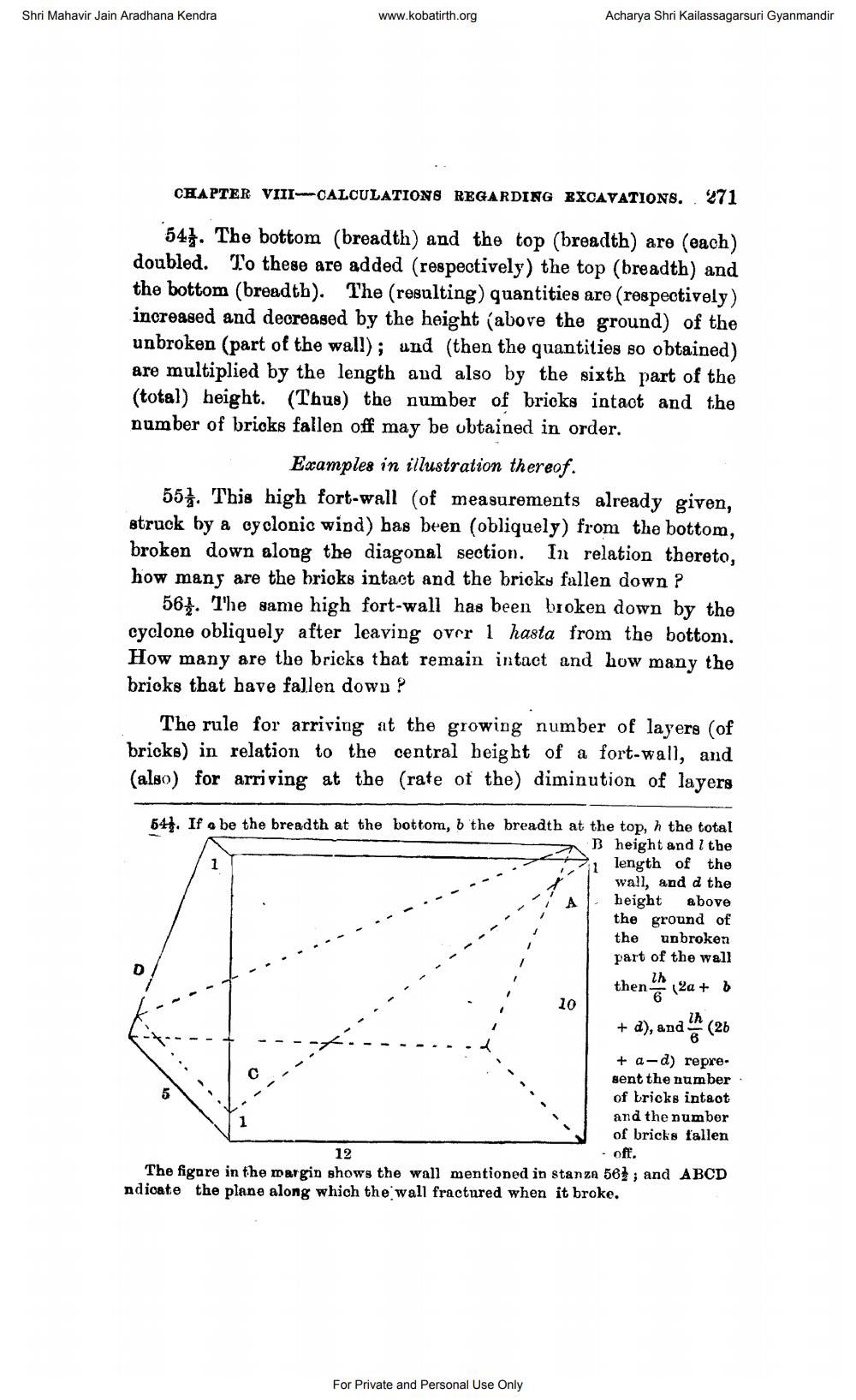________________
Shri Mahavir Jain Aradhana Kendra
www.kobatirth.org
Acharya Shri Kailassagarsuri Gyanmandir
CHAPTER VIII-CALCULATIONS REGARDING EXCAVATIONS. 271
541. The bottom (breadth) and the top (breadth) are (each) doubled. To these are added (respectively) the top (breadth) and the bottom (breadth). The (resulting) quantities are respectively) increased and decreased by the height (above the ground) of the unbroken (part of the wall); und (then the quantities so obtained) are multiplied by the length and also by the sixth part of the (total) height. (Thus) the number of bricks intact and the number of bricks fallen off may be obtained in order.
Examples in illustration thereof. 551. This high fort-wall (of measurements already given, struck by a cyclonic wind) bas been (obliquely) from the bottom, broken down along the diagonal section. In relation thereto, how many are the bricks intact and the bricks fallen down?
564. The same high fort-wall has been broken down by the cyclone obliquely after leaving over 1 hasta from the bottoni. How many are the bricks that remain intact and how many the brioks that have fallen down ?
The rule for arriving at the growing number of layers of bricks) in relation to the central height of a fort-wall, and (algo) for arriving at the rate of the) diminution of layers
54. If a be the breadth at the bottom, b the breadth at the top, h the total
B height and I the > length of the
wall, and d the height above the ground of the unbroken part of the wall
thens 20+ 0 + d), and (26
+ a-d) represent the number of bricks intaot and the number
of bricks fallen 12
- off. The figure in the margin shows the wall mentioned in stanza 587; and ABCD ndicate the plane along which the wall fractured when it broke.
For Private and Personal Use Only




